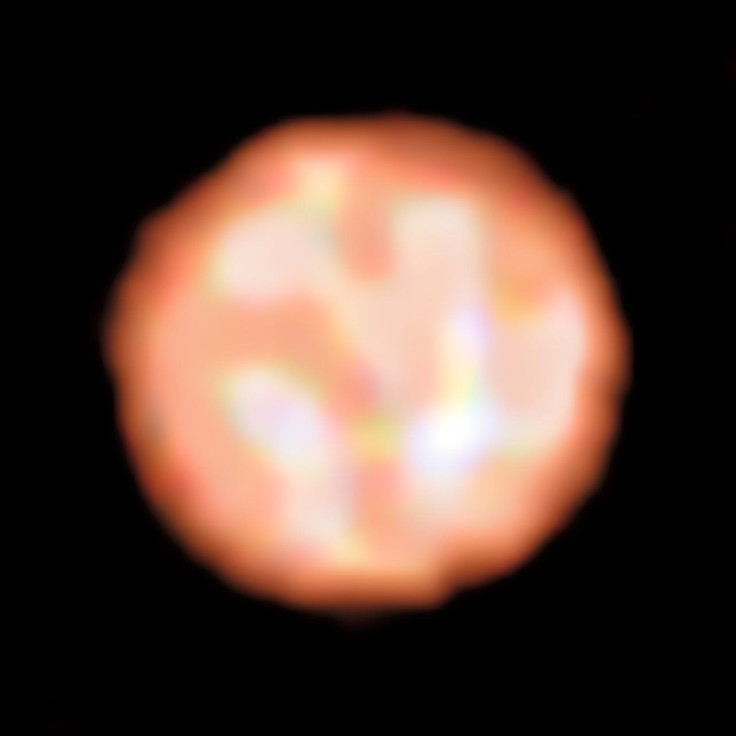Alien Star’s Surface: Astronomers Capture Photo Of Giant Churning

Astronomers took a photo of an enormous star 530 light-years away that shows them what the surface of the sun will look like when it is old.
The star π1 Gruis has become inflated with age to make it a red giant, but that’s not the only thing about it that has changed over time. The European Southern Observatory’s Very Large Telescope zoomed in on the surface of π1 Gruis to see what is called granulation patterns: the churning of its surface. According to the ESO, each one of the convective zones on the surface, which it is referring to as cells, runs about 75 million miles across. There are only a few of those cells on the old star, compared to the couple million of the sun.
If one of those cells was removed from π1 Gruis and plopped down in the middle of our solar system, it would stretch from the sun all the way to the space between Venus and Earth’s orbit.
The ESO says it’s the first time scientists have seen these patterns on a star other than the sun. Their observations are described in the journal Nature.
“The surfaces — known as photospheres — of many giant stars are obscured by dust, which hinders observations,” the observatory said. “However, in the case of π1 Gruis, although dust is present far from the star, it does not have a significant effect on the new infrared observations.”
It’s in the constellation Grus, also known as the Crane, and despite having a mass similar to the sun, π1 Gruis reaches across space about 350 times bigger and shines thousands of times brighter. According to the ESO, our sun will maintain that appearance about 5 billion years from now.
The reason the alien star has so many fewer convective cells than the sun despite having a much larger surface area is due to the low ratio of mass to area gives it significantly weaker gravity on the surface.
There have been photographs of the sun for more than 150 years, with the detail in those images getting better through the decades as camera and space technology improved. But other stars, of course, present a challenge because of their distance from Earth.
Still, astronomers have been zooming their cameras closer and closer to get better views of stars outside our solar system. Earlier this year, a radio telescope took one of the most detailed ever photos of a star, capturing Betelgeuse in the constellation Orion, a few hundred light-years from Earth. The picture got close enough to Betelgeuse’s surface that experts were able to glean information about its temperature and formation.
Another photo of the red supergiant Antares, 620 light-years away in the constellation Scorpius, showed scientists how gas was moving around in its atmosphere. They could not immediately explain the movement, opening up a new space mystery to be solved.
© Copyright IBTimes 2024. All rights reserved.











